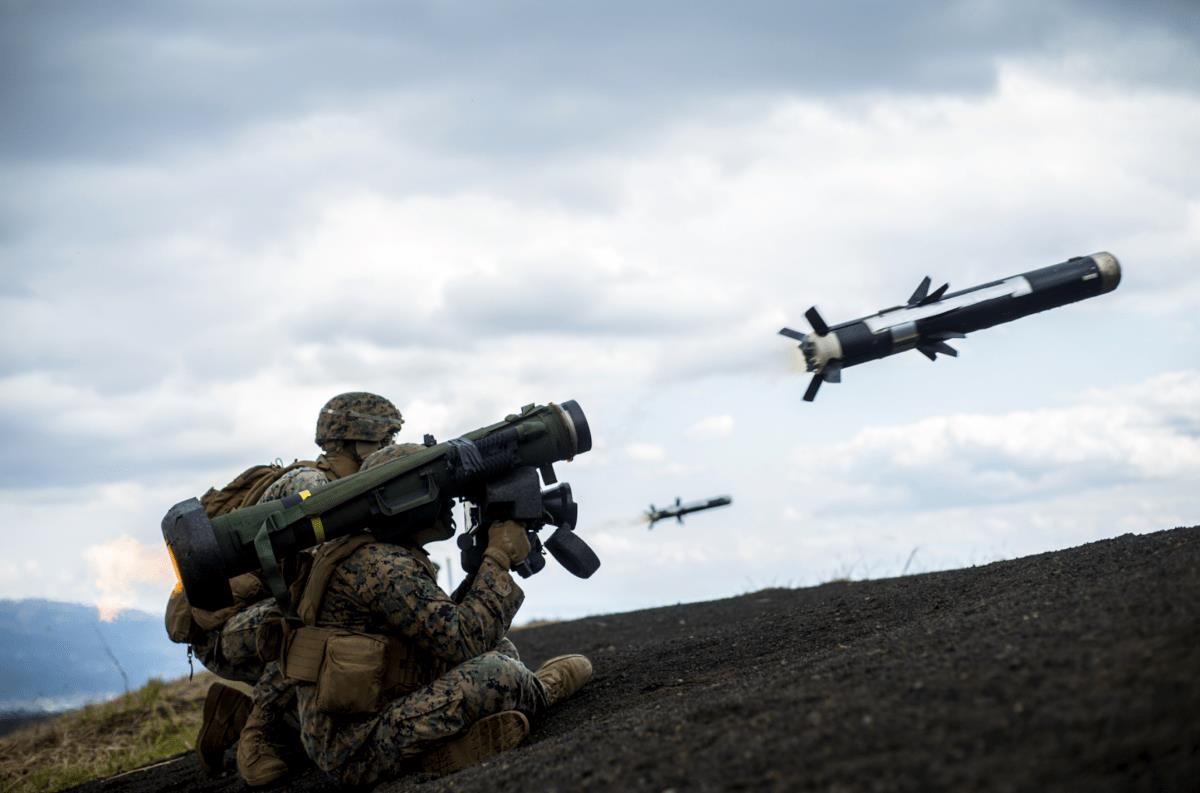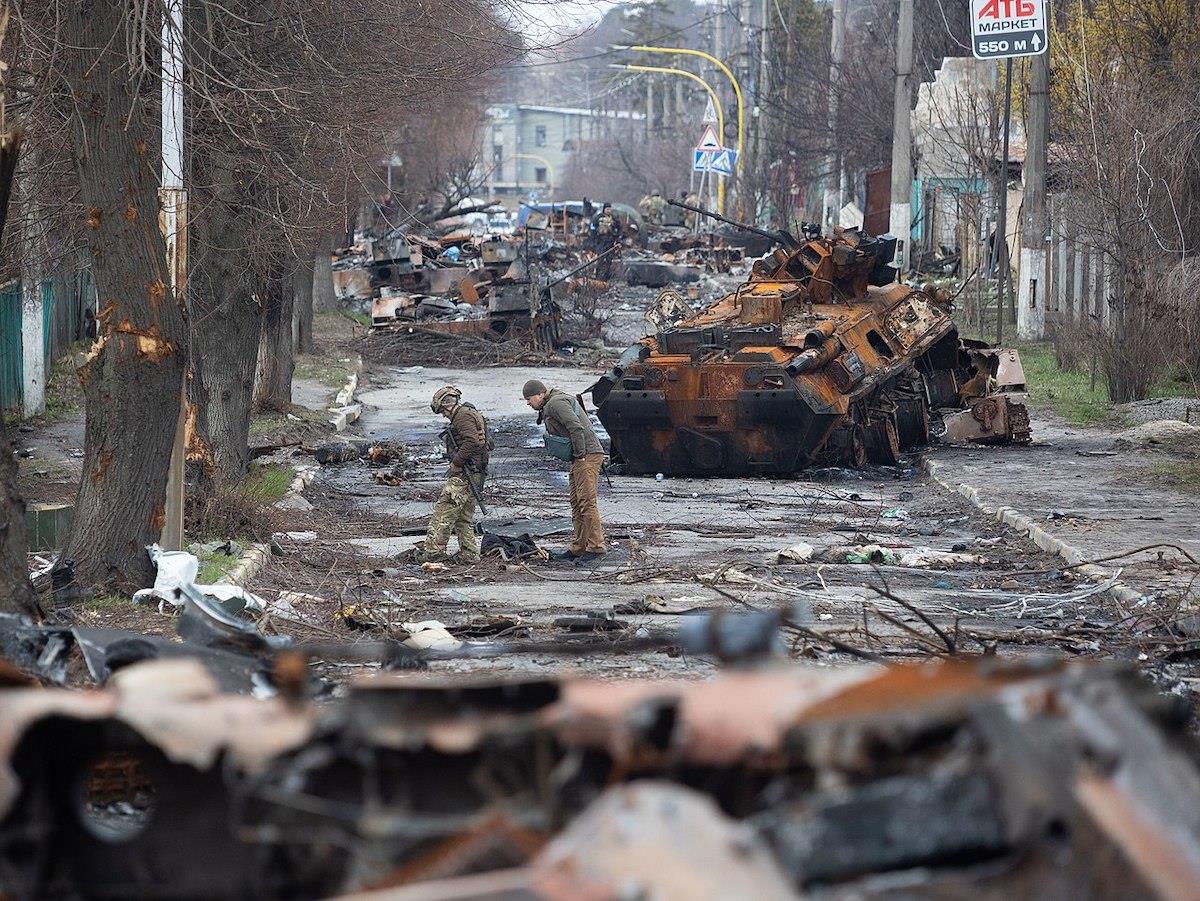(MENAFN- Asia Times) Russia's main battle tanks have been chewed up in the Ukraine war. Many of them have been destroyed and left clustered on roadways, some by modern weapons such as the US Javelin, some by Ukraine's indigenously produced man-portable anti-tank weapons such as the Stugna-P and still others taken out by drones like Turkey's Bayraktar .
By any modern measure, Russian tanks deployed to the Ukrainian battlefield are old and obsolete. Russia's armor operations have been criticized by many experts who have noted tank drivers often stay on roadways where they get stuck in traffic jams and are easily ambushed.
They've also been frequently used in urban spaces where they are immobile and can't maneuver.
Russian tanks have been especially vulnerable from above, where Bayraktar drones have taken them out. Other criticism has centered on Russian tank flaws; when a Russian tank is hit, the ammunition – located near the gun system and stored around an automatic loader –“cooks off,” blowing the turret with the gun into the air. Crew survival on Russian tanks after they are hit in Ukraine is poor.
Russia has also been criticized for moving its armor independently of its infantry and not coordinating its artillery and anti-air weapons with its armor operations. Russian troop training is also highly suspect and conscripts driving tanks without adequate training has been a recipe for disaster.
But even if you put aside all these operational errors and problems, the truth is that Russia is fighting with notably old and outdated equipment, making tank survival difficult even if Russia's field commanders had done everything right and Russia's soldiers had been well-trained.

Russia's invasion of Ukraine has exposed the weaknesses of its tanks. Photo: AFP / Anadolu Agency
Russia's main battle tank in the Ukraine war is the T-72 . Russia has also operated a small number of T-80s and even fewer T-90s . But by far, the T-72, built as a cheaped-down version of the T-64 tank , is Ukraine's main armor opponent.
T-72 production was started in 1971 and has continued over the years. Various improvements have been made, but most of the T-72 tanks Russia is using in Ukraine were produced in the 1970s and 1980s, meaning their average age is over 40 years.
Despite the use of reactive armor (Russia has three generations of the stuff), these tanks are vulnerable to man-portable anti-tank weapons, especially weapons that have tandem warheads designed to defeat reactive armor and penetrate a tank's hull.
Similarly, while Russia has progressed in basic armor design by using specialty steel and composites in layers, the T-72 hulls are by and large not good enough against weapons that can blast through the equivalent of 700mm of hardened steel.
Explosive reactive armor (ERA) is an appliqué or add-on on top of the tank hull and turret. ERA can also be hung on the side of tanks and uses an insensitive energetic explosive material so it won't be set off by small arms or harm infantry operating near the tank.
It is usually arranged in tiles so that if one is destroyed when hit the tile next to it won't explode. More advanced ERAs also include plates made of specialized absorptive materials that are spaced at angles to help deflect the energy of an incoming projectile.
There are three types of missiles and shells that can destroy tanks.
These include shaped charge weapons (as with rocket-propelled grenades such as the ubiquitous RPG-7 ); penetrator tank and artillery rounds (known as armor-piercing fin-stabilized discarding sabot ammunition – APFSDS) which have either steel, tungsten or depleted uranium penetrator rods; and tandem warheads that are made up of two time-separated warheads, the first a high-energy shaped charge (referred to as a HEAT charge) that is designed to knock out an ERA layer and the second to penetrate the tank's hull armor.

A Russian tank heading into battle in Ukraine. Photo: WikiCommons
All of Russia's main battle tanks have weaknesses mainly because as the tank gets heavier it isn't possible to put thick armor everywhere. Typically the turret area, the sides and the rear are more vulnerable than the front of a tank.
Modern battle tanks have powerful diesel or in the case of the Abrams M1 gas turbine engines. Most of the T-72s used in Ukraine have 840hp (630kw) engines. The latest model T-72s have a 1,130hp (580kw) engine, but there are not many of the more recent models in Ukraine.
Engine power in a tank is important for two reasons. First, you need the torque to pull the heavy weight of a tank. Russian T-72 tanks weigh between 42 and 46 tons.
The Abrams updated tank weighs close to 72 tons, not including add-ons such as reactive armor or active defense systems. Second, a tank needs to have the ability to move quickly from standing still so it can rapidly move out of harm's way when an incoming missile or artillery round is detected.
T-72s do not accelerate quickly and many of them lack sensors that can accurately pick up threats.
There are other systems that can help defeat a threat. Tanks, including some of the T-72s, have dazzlers – devices that can emit energy that confuses laser targeting systems. The Bayraktar drone fires micro laser-guided missiles; the Stugna-P also uses laser guidance.
T-72s also have smoke generators that can confuse fire and forget weapons like the Stinger which loses track when it can't“see” its target. For a dazzler to work, the threat needs to be clearly identified. The T-72 mounts the dazzlers forward-looking, so they don't help prevent attacks from above or from the sides.
Considerable attention has focused on Javelin-type weapons, which are designed to pop up and hit the tank on the top and on the turret. Whether this is actually achieved is open to question.
Many of the tanks hit by Javelins and other anti-tank weapons don't hit the turret, as revealed by many videos that can be found online. Nor are they always successful.
While there is no completely reliable information, it often takes as many as five Javelin missiles to destroy a tank when they work. A Javelin missile costs about US$174,000 (the command unit costs $250,000 but is reusable), making Javelins extremely expensive compared to normal gunnery fire.

A Javelin missile during a live-fire combat rehearsal by US troops at Camp Fuji, Japan, April 12, 2021. Photo: WikiCommons / Marine Corps Lance Corporal Jonathan Willcox
A Javelin can blast through some types of explosive reactive armor. Russian tanks have three main kinds: Kontakt 1, Kontakt 5 and Relikt, with a fourth type, called Malachit, supposedly going on the new T-14 Armata tank.
Kontak 1 is found on T-72B, T-72AV and T-72 B1 models. This type of reactive armor won't stop a modern tandem warhead. More recent models of the T72 (for example T-72B3) have Kontakt 5, which is more capable than the earlier Kontakt 1 and is best described as a second-generation explosive reactive armor.
Neither Relikt nor Malachit are found on tanks in the Ukraine war, other than possibly the few T-90s that were tested by the Russians. Two of them have been destroyed, one likely by the Russians themselves when the tank became disabled and rather than allowing it to be captured blew it up.
None of the T-72s have active defense systems. Some Russian tanks have the Shtora-1 passive defense system, an electro-optical system designed to defeat laser-guided weapons. But Shtora-1 is found on T-80 tanks and relatively few of these are being used in Ukraine by Russia. The Ukrainians also have this tank model.
Russia developed an active protection system that can intercept incoming missiles and shells known as Drozd-2. Developed in the late 1980s, about 200 units were manufactured but the system was discontinued after it performed poorly in Afghanistan.
Russia developed a more modern system called Arena (the export model is known as Arena-E), which is specifically designed to protect the topside of tanks. Arena has not appeared in the Ukraine war and it isn't clear the system has met expectations.
Today, the only proven active defense systems are produced in Israel (also exported for the US Abrams, produced by Rafael in Israel in partnership with Leonardo DRS), although many others are in development.
In addition to the US Abrams tanks, Trophy has been sold to Germany for its Leopard II tanks and to Australia. A Trophy Lite version is under development for the US Stryker wheeled armored fighting vehicle.
Active defense systems cover some of the most important vulnerabilities of main battle tanks and are an essential add-on in future warfare scenarios.

The remains of Russian tanks and armored vehicles in the main street of Bucha in Ukraine. Photo: WikiCommons
In Ukraine, Russia is fighting with old, nearly obsolescent equipment like the T-72, which wasn't a bad tank 40 or 50 years ago, but despite attempts to improve it, is not well suited to the 21st-century battlefield.
While Russia may still prevail in Ukraine, using obsolete equipment that has been gathering dust since Soviet times is not a prescription for victory. With more than 20,000 casualties and roughly 1,500 tanks destroyed, Russian leaders have to understand the limitations that burden their military.
Russia is on the verge of losing its conventional deterrent across its European front, with or without a Ukraine victory. And this has tremendous strategic implications for the future.
Follow Stephen Bryen on Twitter at @stevebryen
MENAFN07062022000159011032ID1104334075